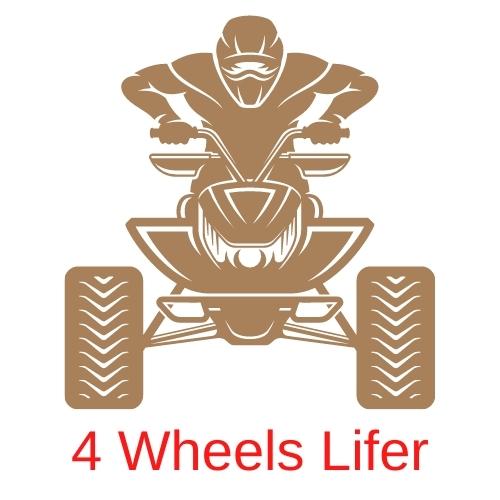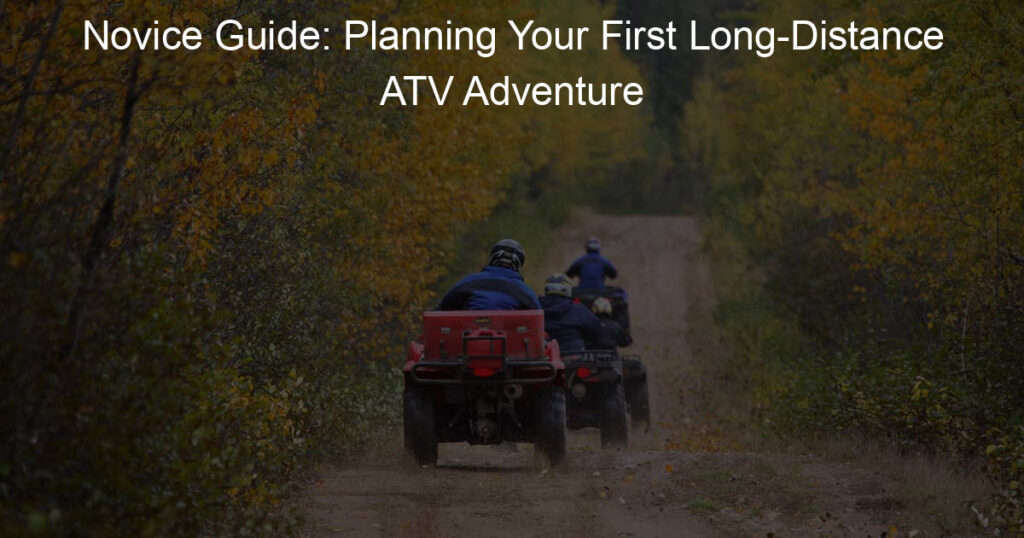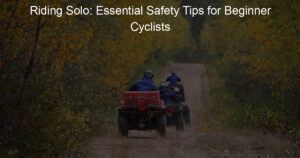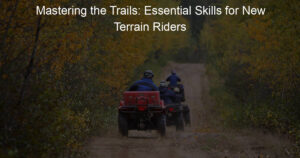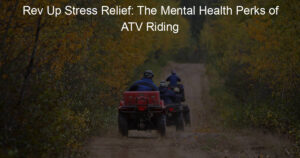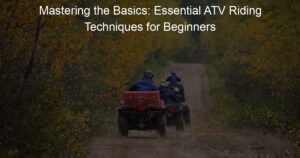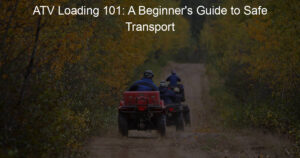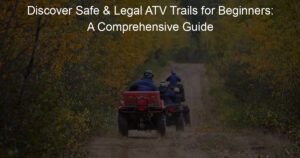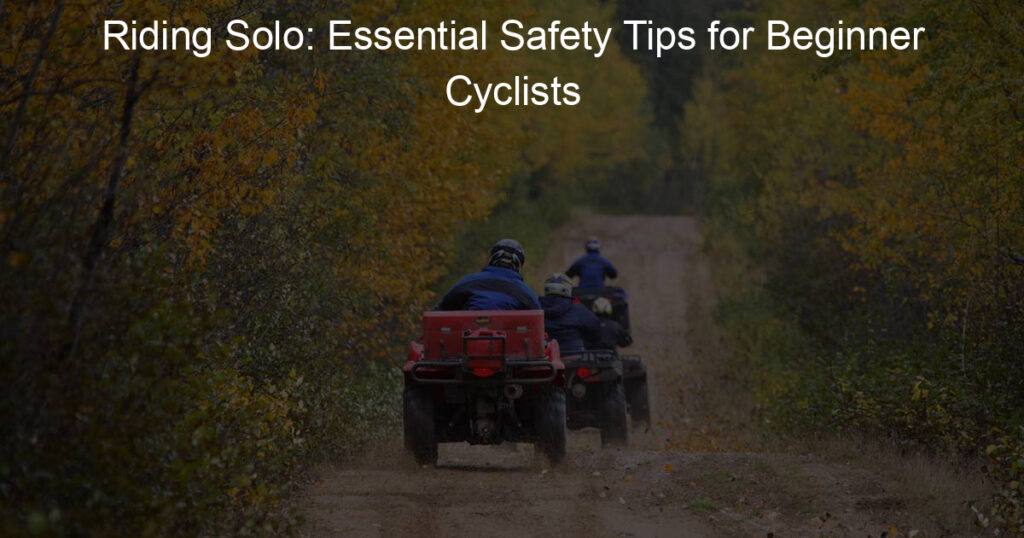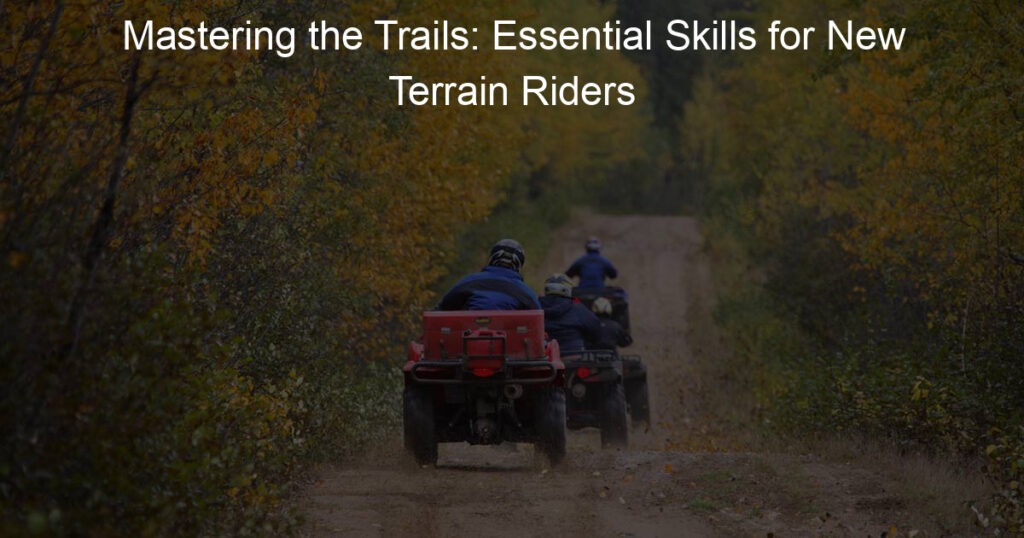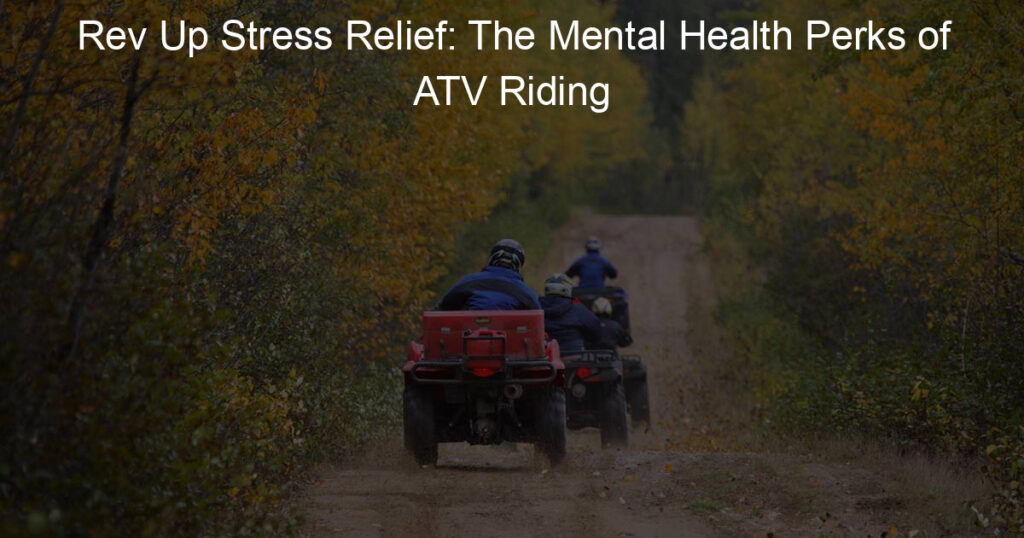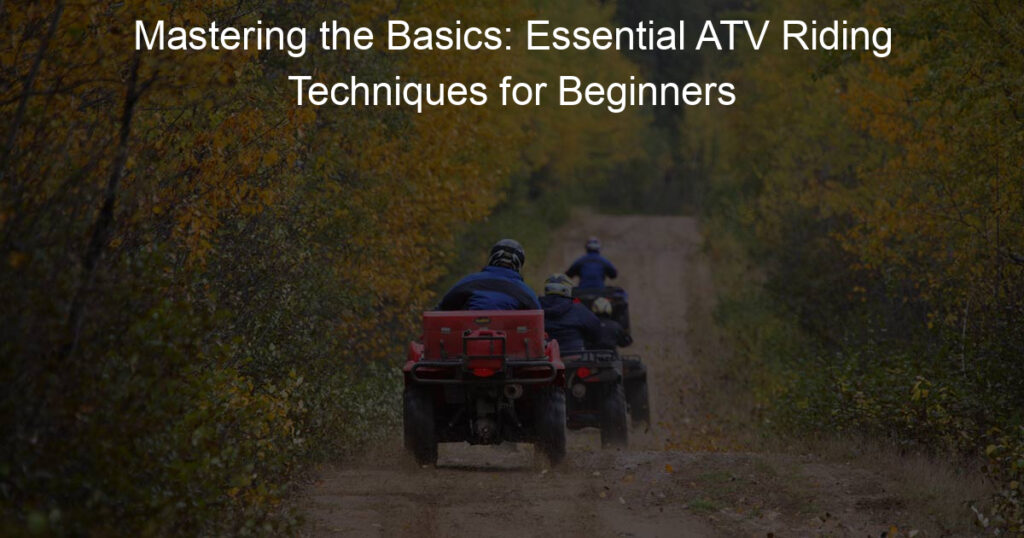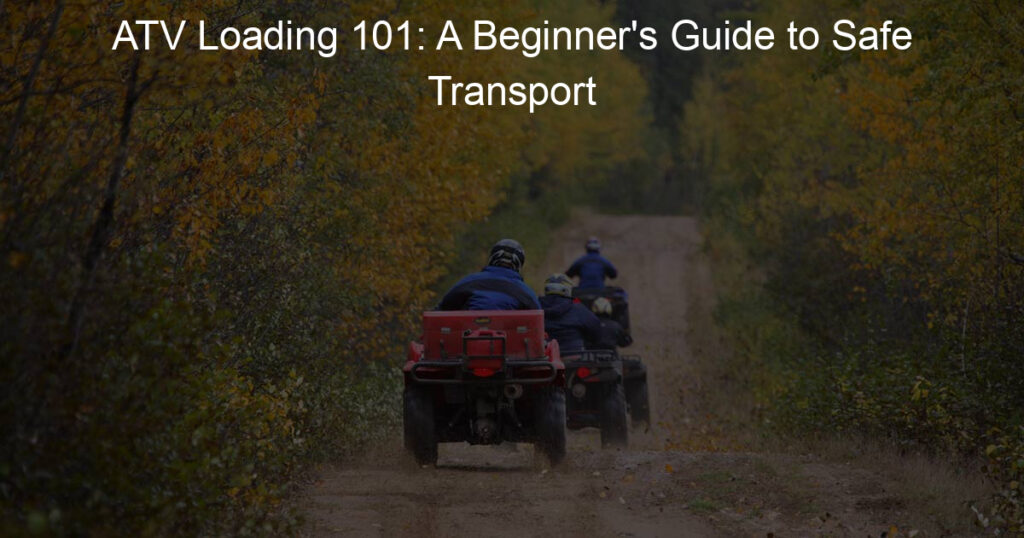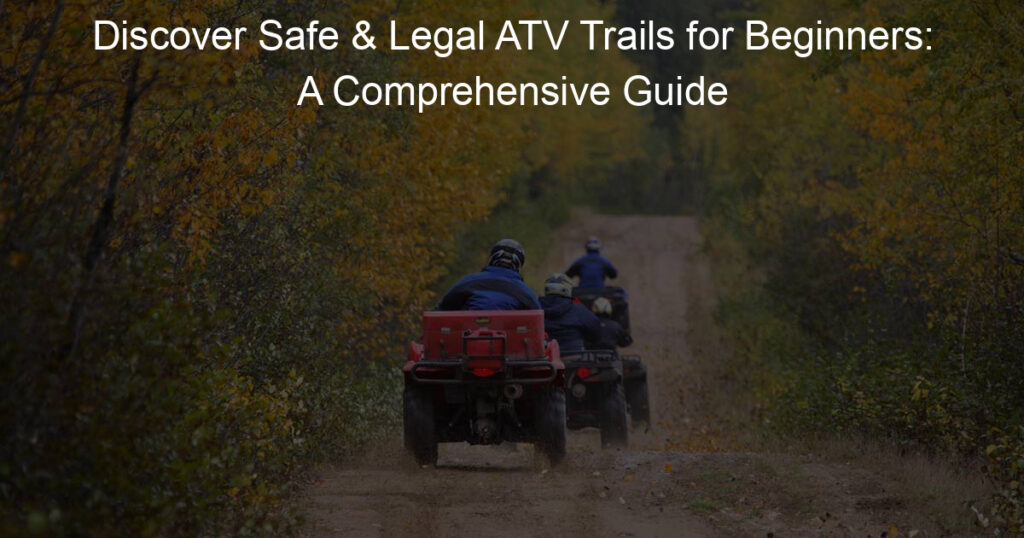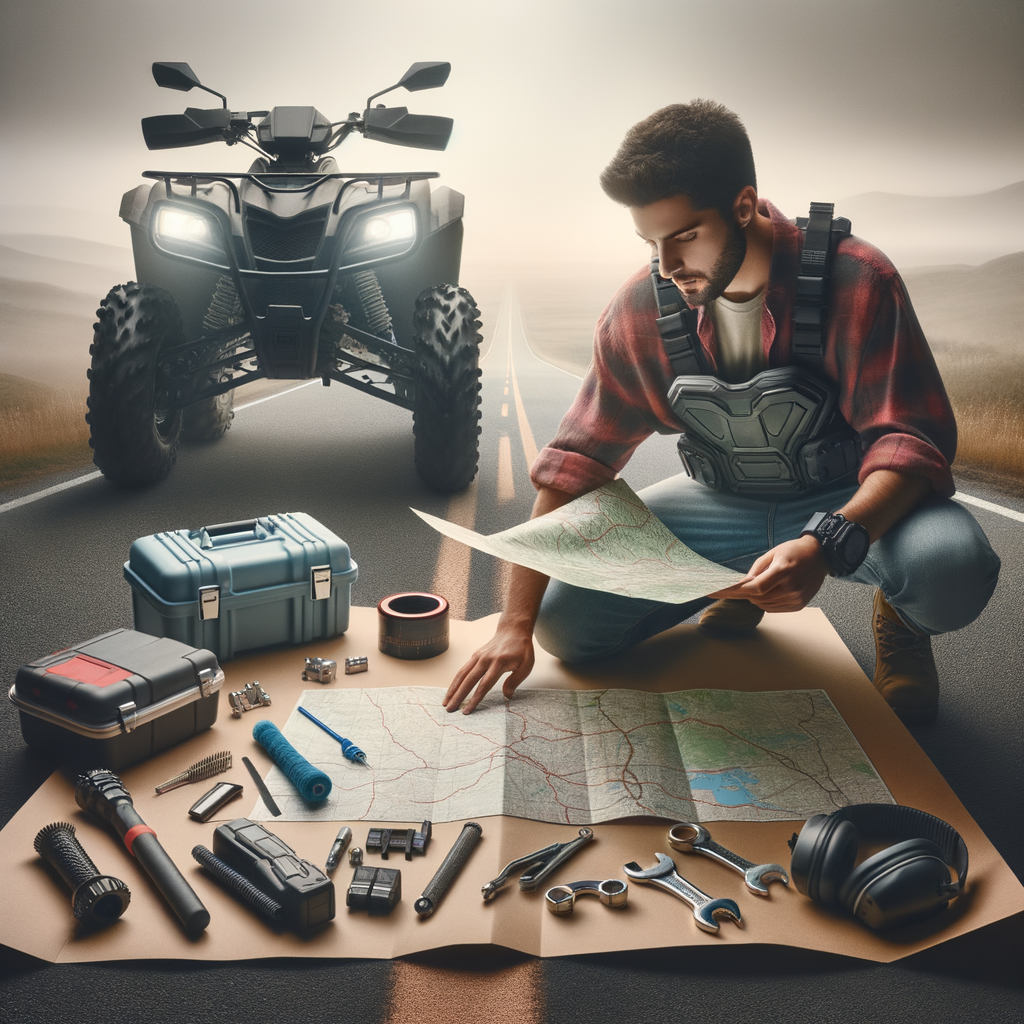
Introduction to ATV Riding for Beginners
ATV riding is an exciting outdoor activity that offers a unique blend of adventure and physical exercise. Whether you’re a seasoned rider or a beginner, understanding the basics, benefits, and common misconceptions about ATV riding can enhance your experience and ensure your safety. Let’s delve into these aspects.
- Understanding the Basics of ATV Riding
- Benefits of ATV Riding
- Common Misconceptions about ATV Riding
ATV, short for All-Terrain Vehicle, is a vehicle designed to handle a wider variety of terrains than most other vehicles. As a beginner, it’s essential to familiarize yourself with the basic controls of an ATV, which include the throttle, brakes, and steering. Riding an ATV involves a combination of balance, coordination, and decision-making skills. It’s recommended to start with a smaller, less powerful ATV to get a feel for the controls before moving on to larger, more powerful models.
ATV riding is not just a thrilling activity; it also offers several benefits. It’s a great way to explore the outdoors and enjoy nature. It can also be a good source of physical exercise, as it engages various muscle groups. Moreover, ATV riding can help improve balance, coordination, and even boost your mood. It’s a fun way to spend time with friends and family, fostering teamwork and camaraderie.
Despite its popularity, there are several misconceptions about ATV riding. One common misconception is that it’s only for thrill-seekers and adventurers. While ATV riding can indeed be thrilling, it’s also suitable for those who simply enjoy outdoor activities. Another misconception is that it’s dangerous. While there are risks involved, as with any sport, these can be significantly reduced by following safety guidelines, using proper gear, and riding responsibly.
In conclusion, ATV riding is a versatile activity that caters to a wide range of interests and skill levels. By understanding the basics, recognizing its benefits, and debunking common misconceptions, beginners can embark on their ATV riding journey with confidence and enjoyment.
Planning Long-Distance ATV Rides
When planning long-distance ATV rides, one of the most crucial decisions you’ll make is choosing the right ATV. This choice can significantly impact your overall riding experience. Let’s delve into some key considerations and the best ATVs for long-distance rides.
Choosing Your ATV
Choosing the right ATV is a critical step in planning your long-distance ride. The right ATV should be comfortable, reliable, and suited to the terrain you’ll be traversing. Here are some considerations when buying an ATV and some of the best ATVs for long-distance rides.
- Considerations when buying an ATV
- Best ATVs for long-distance rides
- Polaris Sportsman 570: Known for its power and comfort, this ATV is a popular choice for long-distance rides.
- Can-Am Outlander MAX XT 650: This ATV is renowned for its reliability and suitability for long rides.
- Honda FourTrax Rancher: A well-rounded ATV, it offers a balance of power, comfort, and reliability.
When buying an ATV, consider its power, comfort, reliability, and suitability for long-distance rides. The ATV should have a powerful engine to handle different terrains and conditions. It should also be comfortable for long rides. Here are some key factors to consider:
| Factor | Description |
|---|---|
| Power | The ATV should have a powerful engine to handle different terrains and conditions. |
| Comfort | The ATV should be comfortable for long rides, with a good seat and suspension. |
| Reliability | The ATV should be reliable, with a good track record of performance and durability. |
| Suitability | The ATV should be suitable for long-distance rides, with features like a large fuel tank and storage space. |
When it comes to long-distance rides, some ATVs stand out from the rest. These ATVs combine power, comfort, reliability, and suitability for long rides. Here are some top picks:
Remember, the right ATV for you depends on your specific needs and preferences. Take your time to research and test different models before making your decision.
Mapping Your Route
When planning a long-distance ATV ride, mapping your route is an essential step. This process involves considering various factors and utilizing specific trail planning tips. Let’s delve into these aspects.
- Factors to Consider When Planning Your Route
- Terrain: The type of terrain you’ll be riding on can significantly impact your journey. It’s important to choose a route that matches your skill level. For beginners, flat and smooth trails are best.
- Distance: The length of your ride is another crucial factor. Ensure the distance is manageable and within your ATV’s fuel range.
- Weather: Check the weather forecast for the day of your ride. Avoid routes that may become dangerous in adverse weather conditions.
- Facilities: Consider the availability of facilities like fuel stations, rest areas, and food outlets along your route.
- ATV Trail Planning Tips
- Use a Map: A detailed map can be a valuable tool when planning your route. It can help you understand the terrain and identify facilities along the way.
- Plan for Breaks: Include regular breaks in your plan. This will help you avoid fatigue and enjoy the ride more.
- Check Trail Conditions: Before you set off, check the conditions of the trails you plan to use. This can help you avoid unexpected obstacles or closures.
- Have a Backup Plan: Always have a plan B in case your original route becomes impassable or if you encounter any other unexpected issues.
There are several factors you should consider when mapping your route for an ATV ride. These include:
Here are some tips to help you plan your ATV trail effectively:
In conclusion, careful planning and consideration of various factors can make your long-distance ATV ride a safe and enjoyable experience. Happy riding!
Preparing for ATV Adventures
When it comes to ATV adventures, preparation is key. This involves not only ensuring your ATV is in top condition but also preparing yourself both physically and mentally.
Physical and Mental Preparation
Before embarking on an ATV adventure, it’s crucial to prepare both your body and mind. Let’s delve into the importance of physical fitness for ATV riding and some mental preparation tips for long-distance rides.
- Importance of physical fitness for ATV riding
- Mental preparation tips for long-distance rides
- Visualization: Imagine yourself successfully navigating the trail. This can help build confidence and reduce anxiety.
- Mindfulness: Practice mindfulness to improve focus and concentration. This involves being fully present and engaged in the moment, which is crucial when riding an ATV.
- Positive Affirmations: Positive affirmations can help boost your confidence and morale. Tell yourself that you are capable and prepared for the ride.
ATV riding is a physically demanding activity. It requires strength, endurance, and balance. Riders must be able to control and maneuver the ATV, which can weigh up to 600 pounds. Therefore, maintaining a good level of physical fitness is essential.
Regular exercise, including strength training and cardio, can help improve your physical fitness. Strength training can help build the necessary muscle to control the ATV, while cardio can improve your endurance, allowing you to ride for longer periods without fatigue.
Long-distance ATV rides can be mentally challenging. Riders must stay focused and alert for extended periods, often in challenging terrains and weather conditions. Here are some tips to help you prepare mentally:
Remember, ATV adventures are not just about the ride; they’re about the journey. By physically and mentally preparing yourself, you can ensure a safe and enjoyable adventure.
ATV Maintenance for Long Rides
Keeping your ATV in top shape is crucial for long rides. Regular maintenance not only ensures your safety but also enhances your riding experience. Let’s delve into the key aspects of ATV maintenance.
- Pre-ride Inspection Checklist
- Common ATV Maintenance Issues and How to Fix Them
- Flat Tires: Always carry a tire repair kit for quick fixes. For severe damage, consider replacing the tire.
- Engine Overheating: This could be due to low coolant levels or a clogged radiator. Refill the coolant and clean the radiator as needed.
- Brake Failure: Regularly check your brake fluid levels and replace worn-out brake pads.
- Dead Battery: Always carry a spare battery or a portable charger. Regularly check your battery’s health.
Before you embark on your long ride, it’s essential to conduct a thorough inspection of your ATV. Here’s a simple checklist to guide you:
| Inspection Item | What to Check |
|---|---|
| Tires | Check for proper inflation and any signs of wear or damage. |
| Brakes | Ensure they are functioning properly and there’s enough brake fluid. |
| Oil and Fuel | Check oil and fuel levels. Top up if necessary. |
| Lights | Ensure all lights are working correctly. |
| Chain/Belt | Check for any signs of wear or damage. |
Even with regular maintenance, ATVs can encounter some common issues. Here are a few and how you can fix them:
Remember, regular maintenance is the key to a smooth and safe ATV ride. Always be prepared for any issues that may arise and know how to fix them. Happy riding!
Beginner’s Guide to ATV Riding Gear
When it comes to ATV riding, safety should always be your top priority. The right gear can make a significant difference, not only in terms of protection but also in enhancing your overall riding experience. Let’s delve into the essential ATV riding gear for long rides.
Essential ATV Riding Gear for Long Rides
Long-distance ATV rides can be thrilling, but they also demand a higher level of preparedness. Here are some essential pieces of gear you should consider:
-
Helmet and Protective Clothing
First and foremost, a helmet is a must-have for any ATV rider. It’s your best defense against serious head injuries. Make sure it’s DOT-approved and fits snugly. Protective clothing, including jackets, gloves, and boots, are also crucial. They shield you from the elements and potential injuries. For instance, a study showed that wearing gloves reduced hand injuries by 47% among ATV riders.
-
Additional Gear for Comfort and Safety
Beyond the basics, there are additional items that can enhance your comfort and safety on long rides. These include hydration packs to keep you hydrated, GPS for navigation, and communication devices for emergencies. A comfortable seat pad can also make a world of difference on long rides. Remember, comfort is key to maintaining focus and preventing fatigue on the trail.
In conclusion, investing in the right ATV riding gear is essential for both safety and comfort. Whether you’re a beginner or an experienced rider, these items can significantly enhance your riding experience and safety on long rides. Remember, safety first!
Choosing the Right Gear
When it comes to ATV riding, having the right gear is crucial. It not only ensures your safety but also enhances your riding experience. Let’s delve into the factors to consider when buying ATV riding gear and some recommended brands for beginners.
-
Factors to Consider When Buying ATV Riding Gear
Choosing the right ATV riding gear can be a daunting task, especially for beginners. However, considering the following factors can make the process easier:
- Safety: This should be your top priority. Ensure the gear meets all safety standards and regulations.
- Comfort: Comfortable gear will make your ride enjoyable. Look for gear with good ventilation and adjustable features.
- Durability: ATV riding can be tough on your gear. Choose gear made from durable materials to withstand the rigors of the ride.
- Size: Properly fitting gear will provide better protection and comfort. Always try on gear before purchasing, if possible.
- Price: While you don’t want to compromise on safety, consider your budget. There are plenty of affordable options that don’t skimp on safety or comfort.
-
Recommended Brands for Beginners
As a beginner, you might be overwhelmed by the numerous ATV gear brands available. Here are some brands that are known for their quality, safety, and affordability:
- Alpinestars: Known for their high-quality helmets and boots.
- Fox Racing: Offers a wide range of ATV gear, including helmets, gloves, and jerseys.
- Thor: Renowned for their durable and comfortable riding gear.
- O’Neal: Provides a variety of gear options at affordable prices.
Remember, the right gear can make a significant difference in your ATV riding experience. Take your time, do your research, and choose gear that best suits your needs and preferences.
Long-Distance ATV Ride Safety Measures
When planning a long-distance ATV ride, safety should be your top priority. Here, we will explore the basic safety measures every ATV rider should know.
ATV Safety Basics
Before you hop on your ATV and start your adventure, it’s crucial to understand the safety features of your vehicle and the safe riding techniques. Let’s dive into these topics.
- Understanding ATV Safety Features
- Tethered Kill Switch: This feature immediately shuts off the engine if the rider falls off.
- Foot Guards: These prevent the rider’s feet from getting caught in the wheels during a ride.
- Headlights and Taillights: These lights enhance visibility, especially during low-light conditions.
- Safe Riding Techniques
- Always Wear a Helmet: A helmet is your best defense against head injuries.
- Keep Both Hands on the Handlebars: This ensures you have full control of the ATV at all times.
- Never Ride Alone: It’s always safer to ride with a buddy, especially on long-distance trips.
ATVs come equipped with a variety of safety features designed to protect riders. These include:
Understanding these features and how they work can significantly increase your safety during a ride.
Proper riding techniques are essential for a safe and enjoyable ATV ride. Here are some tips:
By practicing these techniques, you can significantly reduce the risk of accidents and injuries.
Remember, safety should always come first when riding an ATV. By understanding your ATV’s safety features and practicing safe riding techniques, you can ensure a fun and safe ride.
Handling Emergencies
When you’re out on the trails, it’s essential to be prepared for any situation that might arise. This includes knowing how to handle emergencies. Let’s delve into the first aid essentials for ATV riders and what to do in case of an accident.
- First Aid Essentials for ATV Riders
Having a basic understanding of first aid can be a lifesaver when you’re out on the trails. Here are some essentials that every ATV rider should know:
| First Aid Essentials | Description |
|---|---|
| Bandages and Antiseptic Wipes | For treating minor cuts and scrapes. |
| Compression Bandages | To control bleeding and provide support for sprains and strains. |
| Emergency Blanket | For warmth in case of shock or hypothermia. |
| First-Aid Manual | A guide to treating common injuries. |
Remember, these are just the basics. Depending on your ride, you might need additional items like a snake bite kit or a splint.
- What to Do in Case of an Accident
Accidents can happen, even to the most experienced riders. Knowing what to do can make a big difference. Here are some steps to follow:
- Stay Calm: It’s important to keep a clear head so you can assess the situation and decide on the best course of action.
- Check for Injuries: Determine if you or anyone else is injured. If anyone is seriously hurt, call for help immediately.
- Move to Safety: If it’s safe to do so, move yourself and your ATV out of the way of other riders.
- Report the Accident: If the accident is serious, it should be reported to the appropriate authorities.
Remember, safety should always be your top priority when riding an ATV. By being prepared and knowing how to handle emergencies, you can ensure that your ride is as safe as possible.
Essentials for Long-Distance ATV Rides
Preparing for a long-distance ATV ride involves more than just a full tank of gas. It’s crucial to pack the right items and know how to pack them. Let’s take a look at the essentials and some helpful packing tips.
Packing for Your Ride
Before you hit the trails, you need to ensure you have everything you need for a safe and enjoyable ride. Here’s a list of essential items and some tips on how to pack them.
- Essential items to pack
- First Aid Kit: Accidents can happen, and having a first aid kit can be a lifesaver.
- Water: Staying hydrated is crucial, especially during long rides.
- Food: Pack high-energy snacks like trail mix or energy bars to keep your energy levels up.
- Tools: A basic tool kit can help you make minor repairs on the trail.
- Map and Compass: Even if you have a GPS, a traditional map and compass are good backups.
- Packing tips for long-distance rides
- Balance Your Load: Distribute the weight evenly on your ATV to maintain stability.
- Use Durable Bags: Waterproof and dustproof bags can protect your items from the elements.
- Pack Light: Only bring what you need to reduce the weight on your ATV.
- Secure Your Items: Make sure everything is tightly secured to prevent items from falling off during the ride.
Here are some items you should never leave behind when going for a long-distance ATV ride:
Packing efficiently can make your ride more comfortable and enjoyable. Here are some tips:
Remember, the key to a successful long-distance ATV ride is preparation. Pack smart, ride safe, and enjoy the adventure!
Food and Hydration
When planning for long-distance ATV rides, food and hydration are two crucial factors to consider. The right food can provide the energy you need to keep going, while staying hydrated is essential for your health and performance.
- Best foods for energy during long rides
- Importance of staying hydrated
When it comes to long ATV rides, your body needs fuel to keep going. The best foods for energy are those that are high in carbohydrates, proteins, and healthy fats. Here are some examples:
| Food | Benefits |
|---|---|
| Whole grain bread | Provides long-lasting energy |
| Nuts and seeds | Rich in protein and healthy fats |
| Fruits like bananas and apples | Quick source of energy and hydration |
Remember, it’s not just about what you eat, but also when you eat. Try to have a good meal a few hours before your ride and snack on energy-rich foods during the ride.
Staying hydrated is just as important as eating the right food. When you’re riding, you’re losing water through sweat. If you don’t replace that water, you could get dehydrated, which can make you feel tired and affect your performance.
It’s recommended to drink water every 15-20 minutes during your ride, even if you’re not feeling thirsty. You can also bring a hydration pack with you for easy access to water.
Remember, if you’re feeling thirsty, you’re already starting to dehydrate. So, make sure to drink plenty of water before, during, and after your ride.
In conclusion, proper food and hydration are key to having a successful and enjoyable long-distance ATV ride. So, make sure to plan your meals and water intake carefully.
